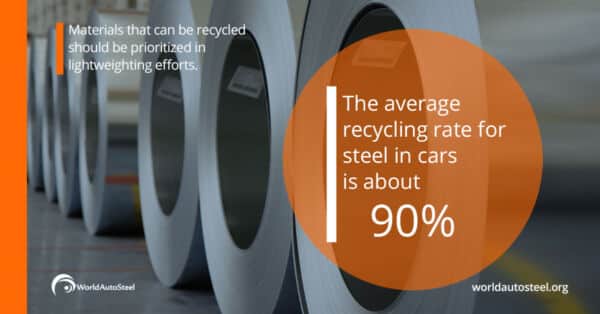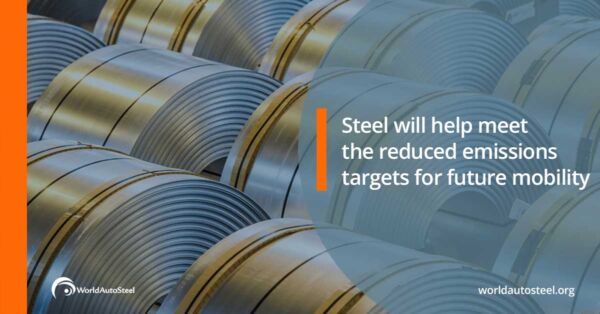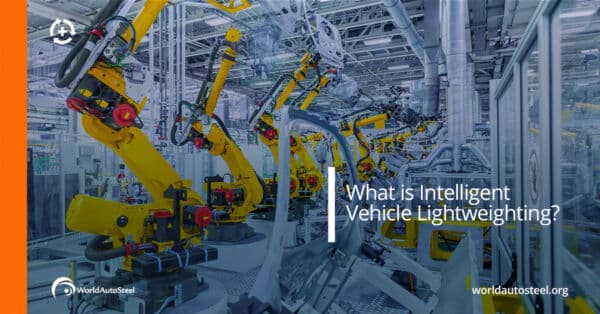On the road to 2035 and beyond, OEMs will come under increasing pressure to decarbonize their portfolio across the full product lifecycle. Lightweighting has long been used as a method of improving vehicle efficiency and reducing the environmental impact of a vehicle with a focus on reducing emissions attributed to the use phase. But how does that translate across the full life cycle of the product? It is essential that OEMs make intelligent vehicle lightweighting decisions which take the full product life of the vehicle into consideration, understanding the trade-offs at each stage of the process.
Life cycle assessment of vehicle lightweighting
The most fundamental aspect of intelligent vehicle lightweighting is considering the carbon benefit that lightweighting will have during the use phase and comparing that with the emissions impact of the materials being considered to reduce mass across the full lifecycle of the vehicle.
It’s undisputable that reducing mass improves tailpipe CO2 emissions of hybrid and ICE vehicles. It has been a methodology used to reduce fuel consumption for decades. However, when we look beyond the use phase of the product lifecycle, it is not so straight forward.
The production of most materials used to reduce vehicle mass tend to be more energy intensive than the steel that they replace. In some cases, the emissions created in production can outweigh the CO2 benefits of reducing mass.
Lightweighting requirements are changing as automotive technology evolves
 The future of mobility is changing radically and rapidly. In the next 15 years, we will see increasing adoption of autonomous vehicles and Mobility-as-a-Service models, with accompanying EV and battery efficiency developments.
The future of mobility is changing radically and rapidly. In the next 15 years, we will see increasing adoption of autonomous vehicles and Mobility-as-a-Service models, with accompanying EV and battery efficiency developments.
As a rule, powertrains are becoming more efficient which is contributing to the reduction of lifecycle CO2. However, as a result, the impact that mass reduction will have on the reduction of the full vehicle carbon footprint becomes less significant. The trade-off of using lightweight alternatives to traditional materials to reduce carbon impact is accentuated.
This is only exacerbated as we move from fossil fuel to electric propulsion. The carbon impact of vehicle performance for full EVs in the use phase is already greatly reduced. Additionally, many electric vehicles use regenerative braking systems to recover energy so mass reduction will have less to do with the power demand.
There are a few special considerations to be made when considering the lightweighting of electric vehicles. Reducing weight in an EV’s package can enable increased battery capacity to improve range on a single charge. Ultimately though, the weight is simply redistributed across the vehicle to accommodate for this. This means that there will likely be little reduction in CO2 emissions attributed to this lightweighting. In fact, the additional production of the battery is likely to offset any benefit that lightweighting alternatives to steel might have.
However, when reducing the mass of an EV through lightweighting, the amount of energy it takes to move the vehicle is reduced. If a vehicle can be made lighter, it can be equipped with a smaller battery to achieve the same range goals. As battery manufacturing becomes more efficient it translates to a further reduction in the lifecycle carbon impact of the vehicle. This further affects the trade-off. The savings from lightweighting using energy-intensive materials could potentially outweigh the emissions savings of a smaller battery.
Finally, as vehicle automation becomes increasingly available as an option for consumers, we will see a fundamental shift in vehicle performance. These systems will perform at the optimum efficiency for the situation that the vehicle is in. Again, improving vehicle efficiency and further reducing the impact that mass reduction would have on emissions during the use phase.
Lightweighting, the circular economy and the end-of-life phase
 When considering the full product lifecycle of a vehicle, it’s important to take the circular economy into consideration. There is a growing focus on the end-of-life of vehicles and recyclability of materials will play an increasingly important role in the production of automotive products.
When considering the full product lifecycle of a vehicle, it’s important to take the circular economy into consideration. There is a growing focus on the end-of-life of vehicles and recyclability of materials will play an increasingly important role in the production of automotive products.
Using materials in the production phase which can then be recycled when the vehicle reaches the end of its usable life will dramatically reduce its carbon impact. Similarly, using recycled materials to produce new materials will also contribute to the reduction.
Choosing the right materials and methodology will be essential to intelligent lightweighting
 The future of mobility is going to be heavily reliant on a lifecycle approach to decarbonisation. Intelligent lightweighting takes many factors into consideration. It will be important for OEMs in the mobility sector to ensure that the CO2 reductions contributed by their lightweighting solutions translate across the whole of the product lifecycle.
The future of mobility is going to be heavily reliant on a lifecycle approach to decarbonisation. Intelligent lightweighting takes many factors into consideration. It will be important for OEMs in the mobility sector to ensure that the CO2 reductions contributed by their lightweighting solutions translate across the whole of the product lifecycle.
Some elements of future vehicle design could reduce environmental impact in some phases of the vehicle’s lifecycle, while increasing impacts in other phases. Using Life Cycle Assessment as a framework can help minimize these trade-offs, ensuring that the vehicles designed for this new mobility are really doing their share to reduce transport emissions.
The bottom line is that OEMs will need to carefully consider the carbon impact of their whole portfolio in this manner. Choosing the right materials and methodology for their lightweighting strategy be a key contributor achieving the best solution which benefits the consumer, the business, and the environment.
WorldAutoSteel is spearheading a program to develop a steel-intensive Mobility as a Service vehicle that uses the advantages of Advanced High-Strength Steel and related manufacturing processes to develop very environmentally efficient Level 5 autonomy concepts fit for ride sharing purposes. Learn more about it and sign up to receive engineering reports and LCA results in 2023 at www.steelemotive.world.
Learn more about LCA on this website here: Life Cycle Thinking.
A blog by Russ Balzer LCACP, WorldAutoSteel Technical Director.
| Russ Balzer
Technical Director, WorldAutoSteel Russ Balzer is an environmental and manufacturing consultant for the Phoenix Group, providing safety, quality and operations support to the steel industry. Presently, Russ manages the WorldAutoSteel vehicle life cycle assessment (LCA) modeling programs, working closely with stakeholders to improve understanding of the impact of material choices on achieving greenhouse gas reductions objectives. Russ is involved in several WorldAutoSteel efforts to address the issue of vehicle carbon footprint and life cycle assessment, including his role as delegate to the World Steel Association’s global LCA Experts Group and is a contributor / analyst for automotive mass benchmarking programs. |


